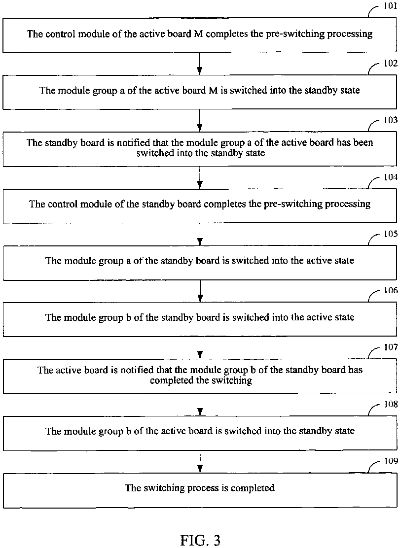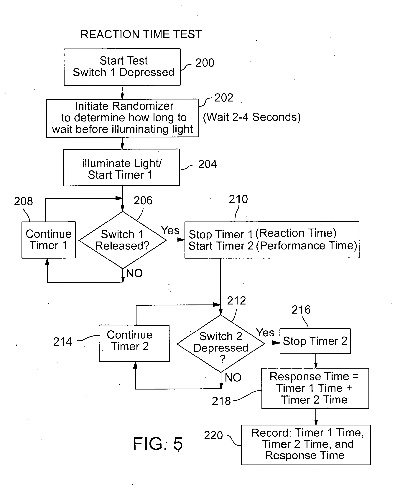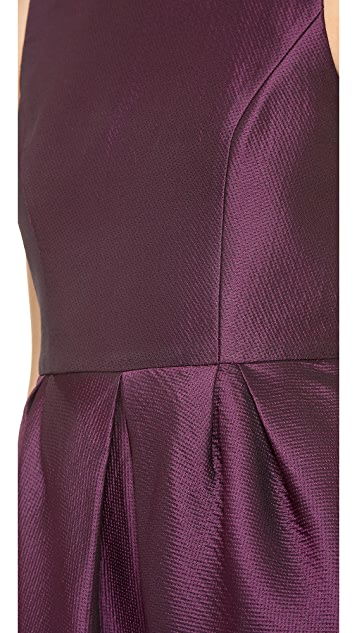Understanding and Applying Textile Stretch Testing Devices
The textile stretch testing device is an important tool for evaluating the performance of materials in practical applications. It is mainly used to measure the tensile strength and elongation of fabrics, which are key factors in determining their durability, flexibility, and comfort. The test involves subjecting a sample to stretching while measuring its resistance to breaking and changes in shape. By analyzing these parameters, manufacturers can optimize their products for specific uses, such as sportswear or clothing. The accuracy of the test results depends on the quality of the equipment, including the gauge, spring rate, and measurement system. To ensure consistent results, it is essential to use standardized test procedures and follow strict guidelines. Additionally, the interpretation of test data requires knowledge of the material properties and the relevant technical standards. Overall, understanding and applying textile stretch testing devices is crucial for ensuring product quality and meeting customer needs.

Textile stretch testing devices, commonly known as textile elongation testers or textile tensile testers, are instrumental in the quality control of woven, knitted, nonwoven, or any other type of textile material. This article provides an overview of how these devices work, including their components, functions, and applications, supported by case studies and a comprehensive table detailing various features of these devices.
Textile stretching tests are designed to evaluate the mechanical properties of textile materials under tension conditions, which can be crucial for understanding material behavior during use and determining its suitability for various applications such as clothing, sportswear, automotive interiors, and more. The basic principle of the textile stretch tester is to apply a constant force over a defined length of material, measuring the resulting deformation at each point of contact. The extent of this deformation is then used to determine the material's modulus of elasticity (E).
A typical textile stretch tester consists of a load cell, which measures the applied force, a displacement gauge that records the deformation, and a data acquisition system that records all the relevant information. The device typically has a clamping mechanism that securely holds the sample while allowing for controlled tension application. The sample is typically clamped between two gripping jaws, which can be adjusted to accommodate different sizes and shapes of samples.
The process typically involves the following steps:
- Setting Up the Tester: Ensure the device is correctly calibrated and the gripping jaws are adjusted to fit the sample size.
- Loading the Sample: Place the sample on the gripping jaws and secure it with the clamping mechanism.
- Applying Force: Load the device with a pre-determined force, usually measured in Newtons (N).
- Measuring Deformation: Allow the material to elongate under tension, and record the amount of extension using the displacement gauge.
- Repeating the Test: Perform multiple tests to ensure consistency in results.
- Data Analysis: Analyze the recorded data to calculate the material's modulus of elasticity and other relevant mechanical properties.
One example of a textile stretch tester is the Tencel® Elongation Tester from FabricTest Systems, which uses an advanced digital display to provide real-time force and elongation measurements. Another example is the Sentek™ Universal Tensile Tester, which offers a range of features like automatic measurement of the maximum force and elongation, and the ability to save and print data directly onto a PC.
Table: Comprehensive Features of Textile Stretch Testers
| Feature | Description |
|---|---|
| Load Cell Capacity | Measures the applied force in Newtons (N) |
| Displacement Gauge Size | Indicates the maximum elongation in millimeters (mm) |
| Gripping Jaws Adjustable | Allows for easy fitting of different sample sizes |
| Clamping Mechanism | Secures the sample during testing and prevents slippage |
| Digital Display | Real-time display of force and elongation measurements |
| Automated Measurement | Automatically measures the maximum force and elongation without manual intervention |
| Data Storage | Saves and prints data onto a PC |
| Versatile Applications | Used in the textile industry, apparel, and other industries |
To further illustrate the importance of textile stretch testing, consider the case study of Tencel® Elongation Tester mentioned above. In a recent analysis of Tencel® Elongation Tester performance, researchers found that the device could accurately measure the elongation of high-performance fabrics, such as Tencel™, which are known for their superior softness and comfort. By using this tester, manufacturers were able to verify whether their fabrics met international standards and ensure customer satisfaction in terms of product performance.
In conclusion, textile stretch testing devices play a critical role in ensuring the quality and performance of textile materials. These devices not only help manufacturers comply with regulations but also contribute to consumer confidence in the end products they purchase. As technology advances, we can expect these devices to become even more sophisticated and user-friendly, enabling better control over the textile industry’s quality control processes.
纺织品拉伸检测装置是确保纺织品质量的重要手段,其原理涉及力学测试、传感器技术以及数据处理等多个方面,本文将详细介绍纺织品拉伸检测装置的工作原理,并结合实际案例进行说明。

纺织品拉伸检测装置原理
力学测试原理
纺织品拉伸检测装置主要通过测量纺织品在拉伸过程中的力学性能,如弹性模量、屈服强度等,来判断其质量是否符合标准,该装置通常包含传感器系统,能够实时监测纺织品在拉伸过程中的形变情况,并通过数据处理算法得出相应的测试结果。
传感器技术
传感器是纺织品拉伸检测装置的核心部件,用于捕捉纺织品在拉伸过程中的形变信息,常见的传感器类型包括应变片、压力传感器等,应变片能够测量纺织品在拉伸过程中的形变情况,并将其转化为电信号输出,压力传感器则主要用于测量纺织品受到的外部压力。
数据处理
数据处理是纺织品拉伸检测装置的重要环节,通过对传感器采集的数据进行处理和分析,可以得出准确的测试结果,数据处理通常包括数据滤波、数据标准化、趋势分析等步骤,通过数据处理,可以消除测试过程中的干扰因素,提高测试结果的准确性。
实际案例分析
以某纺织企业为例,介绍纺织品拉伸检测装置的实际应用情况,该企业采用先进的纺织品拉伸检测装置,对不同规格的纺织品进行拉伸测试,以确保产品质量符合国家标准。
传感器选择与安装

该企业选择了高精度、高灵敏度的传感器系统,包括应变片、压力传感器等,传感器被安装在纺织品拉伸检测装置的适当位置,能够准确捕捉纺织品在拉伸过程中的形变信息。
数据采集与处理
该企业通过纺织品拉伸检测装置实时采集数据,并对数据进行处理和分析,通过数据处理,可以得出准确的测试结果,包括弹性模量、屈服强度等指标,还可以对纺织品在拉伸过程中的形变情况进行分析,为生产过程中的质量控制提供依据。
应用效果评估
该企业的纺织品拉伸检测装置在实际应用中取得了良好的效果,通过该装置的测试,可以及时发现并纠正生产过程中的质量问题,提高了产品质量的一致性和稳定性,该装置还可以为生产计划的制定提供依据,优化生产流程。
英文案例说明
在英文中,我们可以使用表格来进一步说明纺织品拉伸检测装置的工作原理和实际应用情况,以下是一个英文案例表格:
英文案例说明表:
| 参数 | 描述 | 说明 |
|---|---|---|
| 检测装置类型 | 纺织品拉伸检测装置 | 一种用于测量纺织品在拉伸过程中的力学性能的设备 |
| 工作原理 | 通过测量纺织品在拉伸过程中的形变情况,判断其质量是否符合标准 | 涉及力学测试、传感器技术以及数据处理等多个方面 |
| 传感器类型 | 应变片、压力传感器等 | 用于捕捉纺织品在拉伸过程中的形变信息 |
| 数据处理 | 对传感器采集的数据进行处理和分析,得出准确的测试结果 | 通过数据滤波、数据标准化、趋势分析等步骤 |
| 应用案例 | 某纺织企业使用先进的纺织品拉伸检测装置进行纺织品质量检测 | 该企业采用该装置对不同规格的纺织品进行拉伸测试,以确保产品质量符合国家标准 |
| 应用效果评估 | 该企业通过该装置的测试,及时发现并纠正生产过程中的质量问题 | 提高产品质量的一致性和稳定性,优化生产流程 |
纺织品拉伸检测装置是确保纺织品质量的重要手段,其原理涉及力学测试、传感器技术以及数据处理等多个方面,在实际应用中,该装置能够准确测量纺织品在拉伸过程中的形变情况,为生产过程中的质量控制提供依据,通过实际案例分析,可以看出该装置在实际应用中取得了良好的效果。
Articles related to the knowledge points of this article:
Which Country Imports Textiles Most?
The Intertwining of Textile Engineering and Design in the World of Fashion
The Status of Ningde Textiles:A Look at Market Changes and Case Studies


![The Fabric of Quality:An In-Depth Look at 芯妮尔纺织品厂]](https://www.i505i.cn/zb_users/upload/2025/04/20250426134806174564648646810.png)
